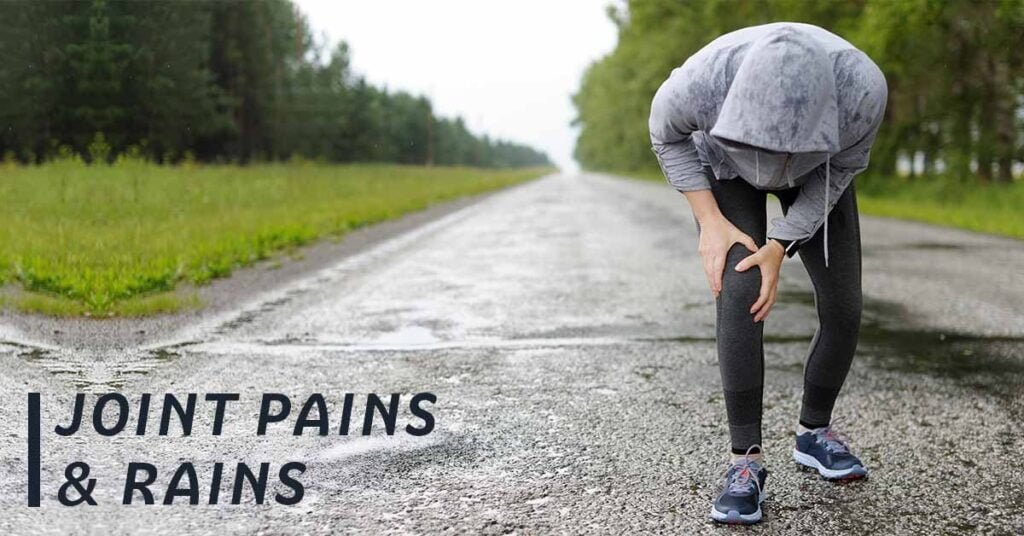Winter Weather Pain
It is common for joints to feel sore or painful when it is cold outside. This is because cold weather can cause the muscles and tissues around the joints to tighten, which can lead to discomfort. It can also cause the blood vessels in the skin to constrict, which can reduce blood flow and make the joints feel stiff. Additionally, cold weather can exacerbate existing joint pain conditions, such as arthritis. To help alleviate joint pain during cold weather, it is important to stay warm, stay physically active, and stretch regularly. You may also find it helpful to use a heating pad or take a warm bath to help relax your muscles and increase blood flow to the joints.

Rainy Day Pains
There is some evidence to suggest that weather, particularly changes in temperature and humidity, can affect the severity of arthritis symptoms. It is not fully understood why this is the case, but it is thought that the changes in weather may cause the joints to expand and contract, which can put additional strain on the joint and lead to increased pain. Additionally, the dampness and wetness that often accompany rainy weather may make the joints feel cold and stiff, which can also contribute to increased pain. While it is not possible to control the weather, there are a number of things that people with arthritis can do to help manage their symptoms, such as staying physically active, using hot and cold therapy, and taking pain medications as prescribed.
How to Manage pain associated with cold, rainy weather

Cold and rainy weather can be tough on those who suffer from chronic pain conditions, such as arthritis or fibromyalgia. Fortunately, there are several strategies that can help manage pain associated with cold, rainy weather:
- Stay Warm: Dressing warmly and keeping your home at a comfortable temperature can help reduce pain associated with cold weather. Layering clothing, using heating pads or blankets, and taking warm baths can also provide relief.
- Exercise: Regular exercise can help reduce pain associated with cold weather. Low-impact exercises, such as walking, swimming, and yoga, can improve circulation, strengthen muscles, and reduce inflammation. It’s important to consult with your healthcare provider before starting any new exercise regimen.
- Stay Active: Staying active throughout the day can help reduce stiffness and pain associated with cold weather. Simple activities, such as taking short walks, stretching, or doing household chores, can help keep your body moving and reduce discomfort.
- Manage Stress: Stress can exacerbate pain symptoms, so it’s important to manage stress levels during cold, rainy weather. Techniques such as meditation, deep breathing, or listening to calming music can help reduce stress and promote relaxation.
- Get Enough Sleep: Getting enough sleep is important for managing pain associated with cold weather. Try to establish a consistent sleep schedule and create a comfortable sleeping environment to promote restful sleep.
- Seek Professional Help: If your pain symptoms are severe or chronic, it’s important to seek professional help from a healthcare provider. They can provide a comprehensive treatment plan that may include medication, physical therapy, or other interventions.
In conclusion, managing pain associated with cold, rainy weather requires a multifaceted approach. Staying warm, exercising, staying active, managing stress, getting enough sleep, and seeking professional help are all important strategies that can help reduce pain and improve quality of life.

